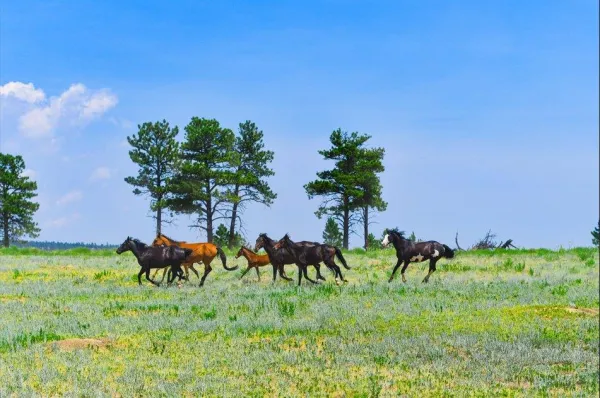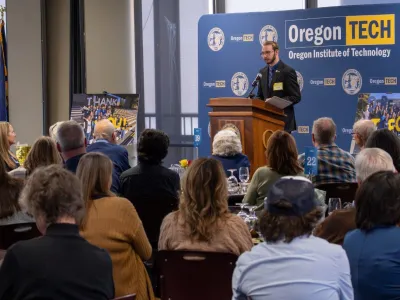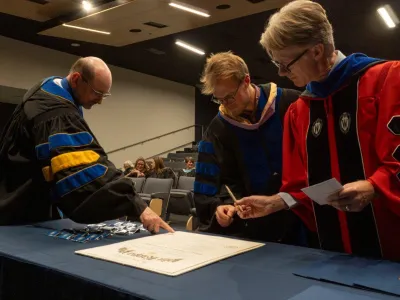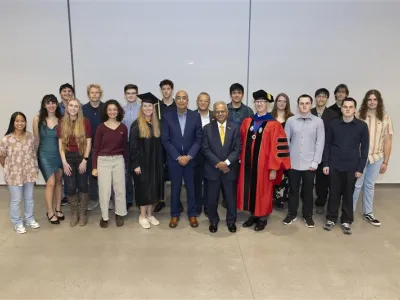
Photo credit: The Black Hills Wild Horse Sanctuary
Oregon Tech Renewable Energy Engineering and Honors Program student Cruz Tecumseh Collin is a co-author of a research article featured on the cover of the May issue of Science, the peer-reviewed journal of the American Association for the Advancement of Science (AAAS). The study, “Sustainability insights from late Pleistocene climate change and horse migration patterns,” carries important lessons for biodiversity conservation in the face of today’s ongoing climate and ecosystem shifts.
“My elders have taught me about the importance of protecting life since I was little,” says Collin, a member of the Lakota Nation and youngest co-author from a collaborative team consisting of 57 international researchers – including 18 Indigenous scientists from the Lakota, sqilxʷ (suknaqin/Okanagan Nation), Blackfoot, Dene’ (Athabascan) and Iñupiaq Nations. “I was also taught that in order to have the most impact, we work alongside other life forms, like the horse, because they show us the way and are great teachers.”
The study, which combines ancient DNA and isotope analyses with traditional Indigenous scientific knowledge systems, reveals new insights into how climate change affected megaherbivore species in the Late Pleistocene.
To create the data for the study, the genomes of 68 Late Pleistocene horse specimens from the American and Eurasian continents were sequenced, using Western and Lakota genomics techniques. This enabled the team to delve deeper into intercontinental horse migrations, focusing on movement up to and during the Last Glacial Maximum, between 26,000 and 19,000 years ago. This study revealed a back-and-forth migration pattern across the region referred to today as “the Bering Strait” in response to environmental shifts.
“We did this study with our allies from other nations in order to show the world the importance of movement in sustaining life,” says Chief Joe American Horse, a traditional leader and knowledge keeper for the Lakota Nation and a co-author for the study. He references “yutaŋ’kil,” the Lakota scientific concept that was brought forward by Chief Left Heron in this study to help today’s scientific and conservation community understand life’s behavior during these times of great environmental change. “This concept means that life never moves alone, but follows its ecosystem – life must move to survive and thrive.”
These findings underscore the importance of maintaining ecological corridors that support continuous movement between habitats rather than blocking it. Collin states that such pathways can help to preserve the biodiversity of megafauna and their dependent and interrelated life forms—not only in the rapidly warming Arctic, but globally—as the world readies itself to face a worsening biodiversity crisis.
“An amazing part about this work is that our team was able to respect the scientific protocols of both systems – Western and Indigenous – and show the connections the horses made with each other as they moved in response to environmental change,” says Collin. He describes the importance of multigenerational collaboration in the Lakota culture and the opportunity he was given to apply some of the knowledge that he learned practicing Lakota horse husbandry during the research process. “Being part of this work helps me to know that I am doing my part to make sure that we create a good path forward for all life, and my experience with the horse helps me to know that they will always leave us a good trail to follow into the future.”
###









